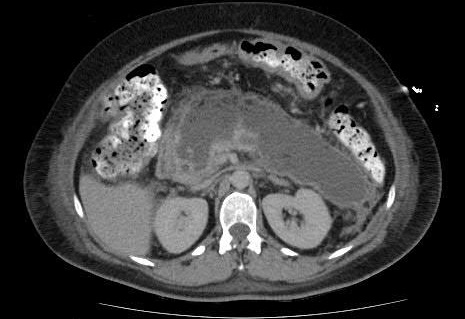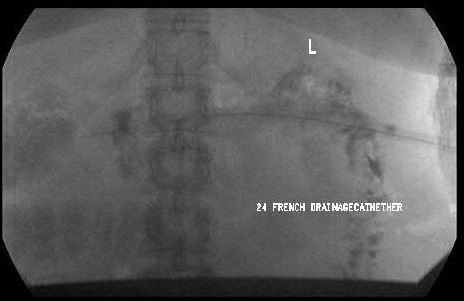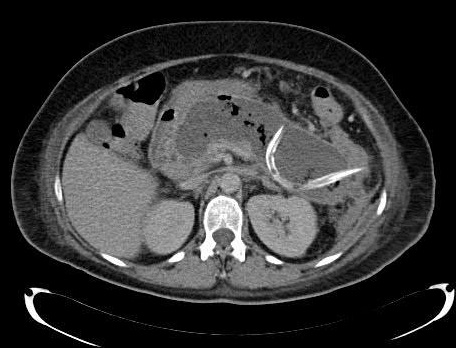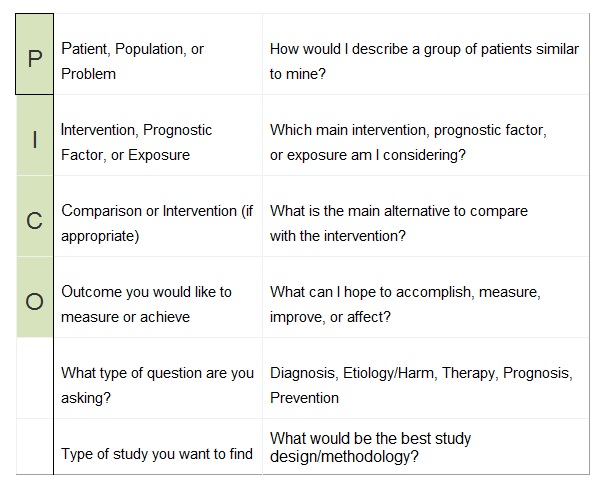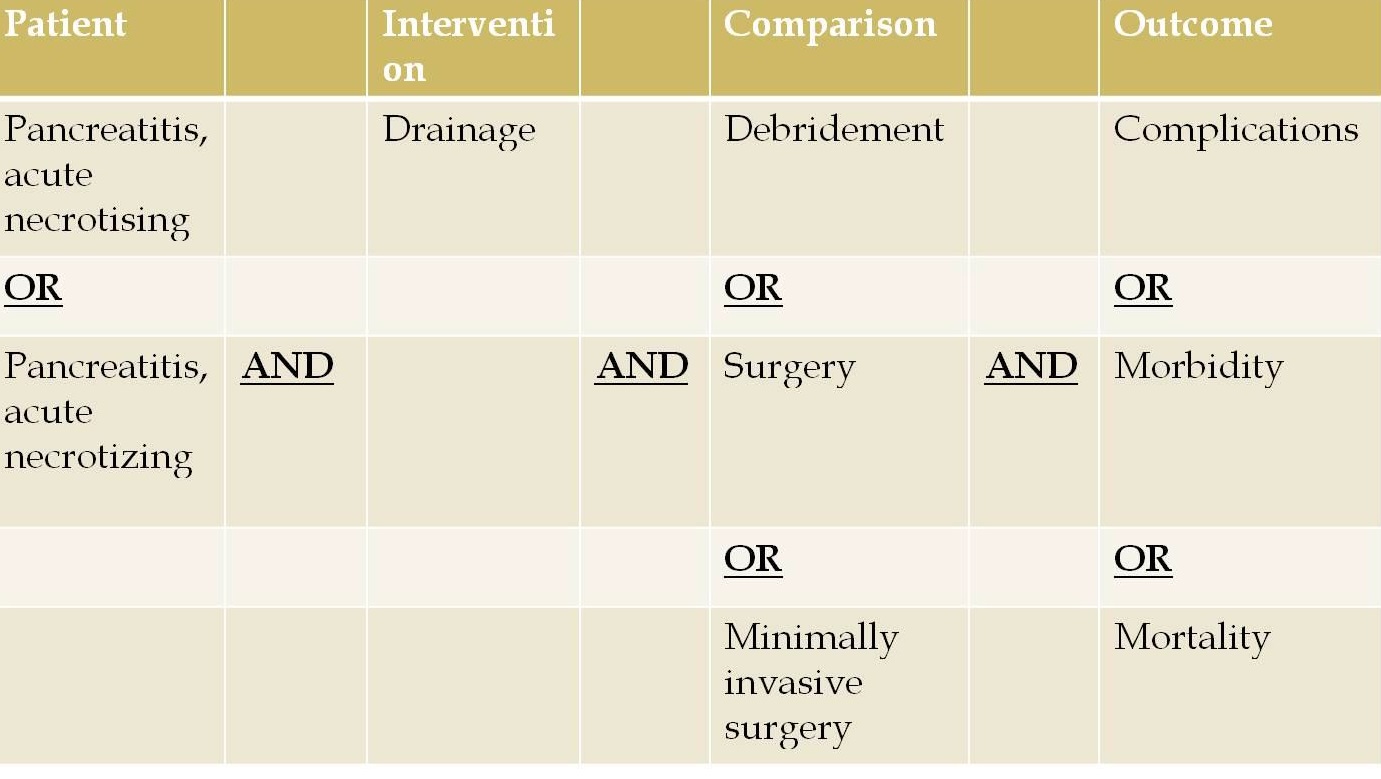在美国胰腺炎(pancreatitis)发病率约为每年185000人。并发急性坏死性胰腺炎(acute necrotizing pancreatitis)占这些病例的20%。传统治疗选项包括保守治疗+ / -开放性手术。与开腹坏死组织清除术(open necrosectomy)相关的严重并发症发生率34~95%,死亡率为11~39 %。
面对较高的手术危险,新治疗策略出现包括经皮引流(percutaneous drainage,PCD),内镜下引流术和微创手术。Freeney 等人在1998年首次介绍了影像引导下PCD治疗坏死性胰腺炎连续病例。34例患者入选,47%例成功治疗,53%例需进一步手术,死亡4例。本栏目的目标是评价现有的文献和评估是否初始坏死性胰腺炎引流( Primary Percutaneous Drainage) 降低急性坏死性胰腺炎并发症发生率和死亡率。
1. 要求回答问题 “急性坏死性胰腺炎病人,初始应用经皮引流术比较开腹坏死组织清除术可以减少并发症和死亡率吗?” 2. 检索目前最好的证据 (1)PICO(Patient,Intervention,Comparison,Outcome)table (2)Pubmed (3)Yottalook (4)Cochrane Library (5)Up to date PICO table
3. 检索到的证据:Relevant retrieved articles included (1)1篇 系统综述(Systematic Review), (2)1篇 随机对照研究(Randomised Control Trial ) (3)3篇 回顾性病例报告(Retrospective Case series). (4)2篇 教育性回顾报告(Educational reviews)没有被评估 1篇系统性回顾文章,是最高证据水平 van Baal MC, van Santvoort HC, Bollen TL, Bakker OJ, Besselink MG, Gooszen HG; Dutch Pancreatitis Study Group. Systematic review of percutaneous catheter drainage as primary treatment for necrotizing pancreatitis. Br J Surg. 2011 Jan;98(1):18-27. 11项研究,包括384病人 1)1项个多中心随机对照研究(RCT):比较PCD±微创外科 vs 开腹坏死物清除术(Oxford level 1B evidence). 2) 9篇 PCD 回顾性非对照研究病例报告(Oxford level 4) 3)1 篇 PCD 前瞻性非对照病例研究报告(Oxford level 4) 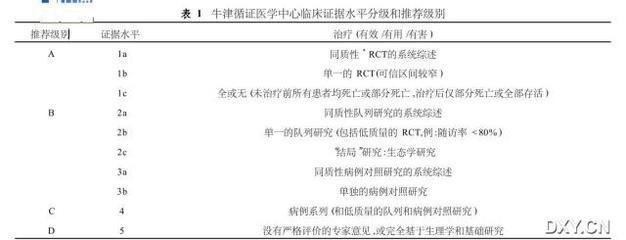 系统性综述性研究的评价
384例患者在本系统评价中的结果是什么?
这些数据统计的问题是,他们来自一个系统评估,包括11项研究,其中10项是低证据水平的研究,结果有偏差。
“A step up approach or open necrosectomy for necrotising pancreatitis”. Van Santvoort et al.
van Santvoort HC, Besselink MG, Bakker OJ, Hofker HS, Boermeester MA, Dejong CH, van Goor H, Schaapherder AF, van Eijck CH, Bollen TL, van Ramshorst B, Nieuwenhuijs VB, Timmer R, Laméris JS, Kruyt PM, Manusama ER, van der Harst E, van der Schelling GP, Karsten T, Hesselink EJ, van Laarhoven CJ, Rosman C, Bosscha K, de Wit RJ, Houdijk AP, van Leeuwen MS, Buskens E, Gooszen HG; Dutch Pancreatitis Study Group. A step-up approach or open necrosectomy for necrotizing pancreatitis. N Engl J Med. 2010 Apr 22;362(16):1491-502. doi: 10.1056/NEJMoa0908821.
4. 研究结果的应用(这些发现的结果对局部操作意味着什么?)
5. 评估你的表现
结论:作为初始坏死性胰腺炎治疗,PCD的应用证据目前是低水平的。系统评估和独立随机对照研究的评估其结论是
PCD可能在未来急性坏死性胰腺炎治疗中扮演重要的角色 评价中应该考虑到的各种问题 (1)评估中问了明确的焦点问题? (2)评估包括正确的研究类型? (3)找出所有的相关研究? (4)评估者纳入了研究质量? (5)结果的组合,这样做合理吗? (6)可以将这样的结果应用到本地人 (7)考虑到所有重要的结果了吗?
1. Van Santvoortet al. Systematic review of percutaneouscatheter drainage as primary treatment for necrotizing pancreatitis. BJS 2011; 98:18-27.
2. Van Baal et al. A step up approach or open necrosectomyfor necrotising pancreatitis. NEJM 2010;362:1491-502.
3. Freeny PC et al. PercutaneousCT guided catheter drainage of infected acute necrotizing pancreatitis: techniques and results. AJR Am J Roentgenology 1998; 170: 969-975. 3. Staunton M. Evidence Based Radiology: Steps 1 and 2-Asking Answerable Questions and Searching for evidence. Radiology: Volume 242: Number 1-January 2007. 4. Banks PA, Freeman ML, Practice Parameters Committee of the American College of Gastroenterology. Practice guidelines in acute pancreatitis. Am J Gastroenterology 2006;101:2379-2400. 5. Rau B et al. Surgical treatment of necrotizing pancreatitis by necrosectomyand closed lavage: changing patient characteristics and outcome in a 19-year, single centre series. Surgery 2005;138:28-39.
6. Rodriguez et al. Debridement and closed packing for sterile or infected necrotizing pancreatitis: insights into indications and outcomes in 167 patients. Annals of Surgery 2008;247:294-299.
7. TsiotosGG et al. Long-term outcome of necrotizing pancreatitis treated by necrosectomy. BJS 1998;85:1650-1653.
8. RaratyMGT et al. Minimal access retroperitoneal pancreatic necrosectomyimprovement in morbidity and mortality with a less invasive approach. Annals of Surgery 2010;251:787-793.
|


